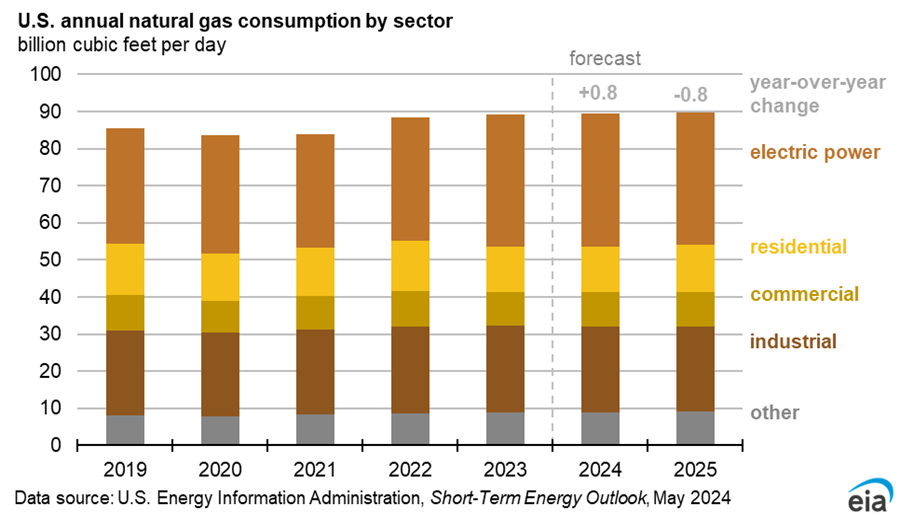Natural gas
Natural gas prices
The U.S. benchmark Henry Hub spot price in our forecast averages $3.90 per million British thermal units (MMBtu) over this winter season (November–March), peaking in January at $4.25/MMBtu. Natural gas prices typically rise during the winter as demand for space heating increases and consumption of natural gas peaks for the year. This winter, we expect rising LNG exports to increase demand for U.S. natural gas as well.
This October, U.S. inventories ended the month about the same as last year and 4% above the five-year average (2020–2024). Despite similar inventory levels, the October monthly Henry Hub price averaged about $3.20/MMBtu, up 45% from the same month last year. We expect prices to average $4.00/MMBtu in 2026, up 16% from this year.
Plaquemines LNG in Louisiana received approval from the Federal Energy Regulatory Commission to introduce natural gas into Block 17, bringing the last remaining block at the 2.6-billion-cubic-feet-per-day (Bcf/d) terminal into LNG production earlier than January 2026, which is what we previously expected. With this capacity online earlier than expected, we raised our forecast for LNG exports in 4Q25 by 3% compared with last month’s outlook. We expect Golden Pass LNG Trains 1–2 and Corpus Christi Stage 3 Blocks 4–7 will begin shipping cargoes in 2026, adding 2.1 Bcf/d of LNG export capacity by the end of the year.
The effect of changing wholesale natural gas prices on residential natural gas prices is delayed because of the nature of utility regulations. We forecast the residential price of natural gas will average just over $13.80 per thousand cubic feet this winter, up 2% from last year, largely keeping costs stable for consumers that heat their homes with natural gas.
Natural gas consumption
We expect lower domestic natural gas consumption during the 2025―26 winter heating season (November—March) because of a warmer weather forecast compared with last winter. We expect U.S. natural gas consumption in the residential and commercial sectors this winter, which largely stems from space heating, to average 36.5 Bcf/d, 5% less than last winter and 2% less than the five-year (2020–2024) average.
Temperatures across much of the country were slightly above normal into the first week of November, and forecasts from the National Oceanic and Atmospheric Administration show the South Central and Southwestern United States will have above average temperatures for much of the month. Our forecast includes 3% fewer heating degree days (HDDs) than last winter and 2% fewer HDDs than the prior five-year average.


